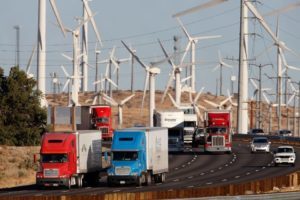 2018 was an important year for EU energy legislation, as lawmakers rushed to complete the promises of President Jean-Claude Juncker before the end of the term in just four months time. But it is still uncertain whether these new energy laws, including the bloc’s first limits on CO2 emissions from trucks, will be passed before the March deadline. If lawmakers run out of time, it could mean that new lawmakers have to start over from the beginning when they take office this summer, following the pan-European election in May. And this time, the end-of term crunch is even more stressful because of Brexit. The EU’s other co-legislating body, the Council of Ministers, also must approve legislation. The Council and the Parliament each draft their own versions of a new law and must agree to reconcile them into one version, much like the House and Senate in the United States. The Council is made up of ministers from the national governments of each of the 28 EU member countries, whereas the Parliament is made up of directly-elected representatives of EU citizens, bypassing the national governments. Last week the Austrian government, which currently holds the Council presidency, and European Parliament negotiators reached a deal on updated car CO2 limits setting a 15% reduction by 2025 and a 37.5% reduction by 2030. The agreement is halfway between the Council’s position of a 35% CO2 cut and the Parliament’s 40%. The legislation would also set a 31% target for van emissions by 2030. But many in the Parliament are disappointed that so many provisions in their version of the legislation, adopted in October despite intense pressure from the auto industry, have been negotiated away. Forbes
2018 was an important year for EU energy legislation, as lawmakers rushed to complete the promises of President Jean-Claude Juncker before the end of the term in just four months time. But it is still uncertain whether these new energy laws, including the bloc’s first limits on CO2 emissions from trucks, will be passed before the March deadline. If lawmakers run out of time, it could mean that new lawmakers have to start over from the beginning when they take office this summer, following the pan-European election in May. And this time, the end-of term crunch is even more stressful because of Brexit. The EU’s other co-legislating body, the Council of Ministers, also must approve legislation. The Council and the Parliament each draft their own versions of a new law and must agree to reconcile them into one version, much like the House and Senate in the United States. The Council is made up of ministers from the national governments of each of the 28 EU member countries, whereas the Parliament is made up of directly-elected representatives of EU citizens, bypassing the national governments. Last week the Austrian government, which currently holds the Council presidency, and European Parliament negotiators reached a deal on updated car CO2 limits setting a 15% reduction by 2025 and a 37.5% reduction by 2030. The agreement is halfway between the Council’s position of a 35% CO2 cut and the Parliament’s 40%. The legislation would also set a 31% target for van emissions by 2030. But many in the Parliament are disappointed that so many provisions in their version of the legislation, adopted in October despite intense pressure from the auto industry, have been negotiated away. Forbes
